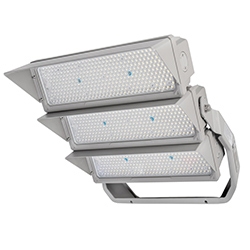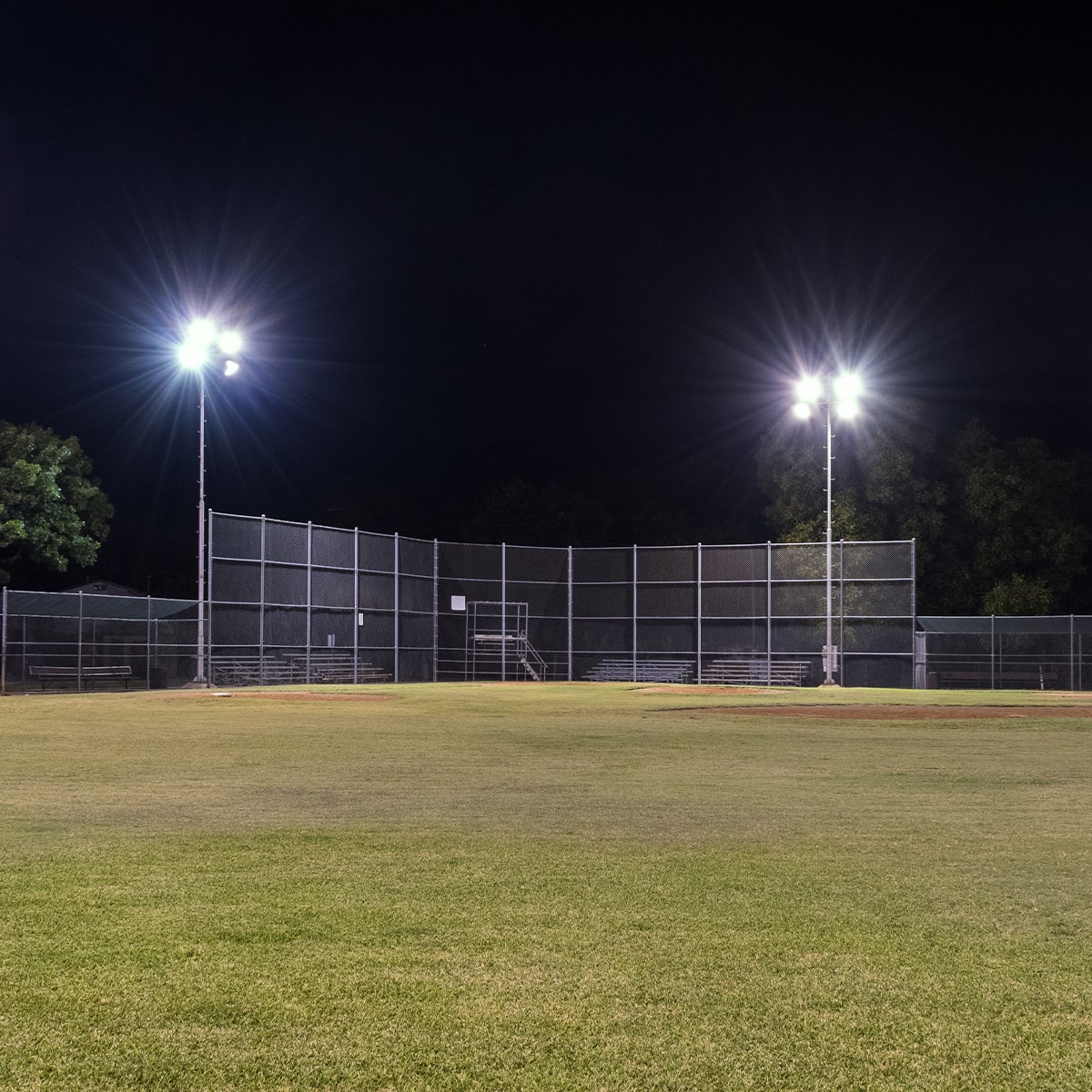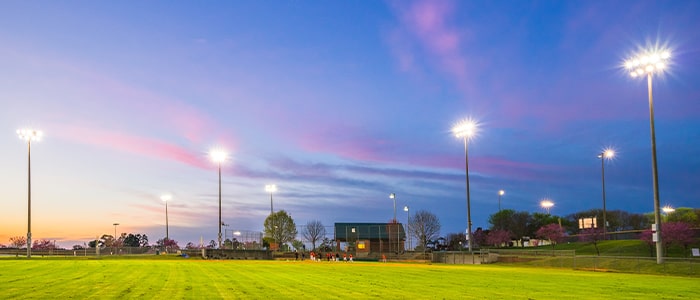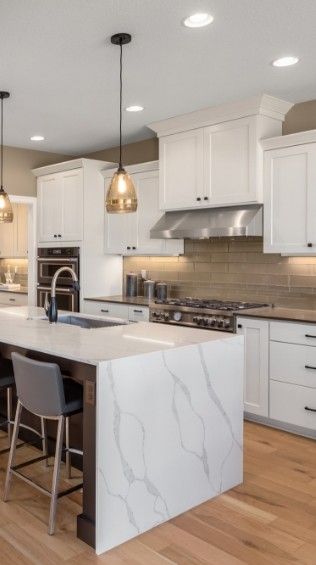Sports Lighting
LED Garage and Shop Lights
-
Bright, Efficient, and Built to Last
High-lumen output with energy-saving LED technology for reliable performance. -
Easy Installation & Versatile Options
Choose from linkable, motion-activated, and dimmable designs to fit any workspace. -
Commercial-Grade Durability
Rugged construction for garages, workshops, and industrial settings.
Powerful & Efficient Sports Lighting
Powerful lighting in sports fields, stadiums, and complexes benefits spectators and players. LED sports lighting uses less energy than traditional metal halide fixtures, lowering overall energy consumption and costs. Additionally, LED sports lighting is constructed with integrated LEDs, lowering overall maintenance and related costs. These fixtures are designed to produce clear visibility with a uniform light projection to help athletes perform safely and effectively. LED stadium lights are suitable for several applications, such as commercial soccer field lights, high school football field lights, running tracks, professional basketball courts, recreational pickleball or tennis courts, or community baseball field lights.
Stadium and Sport Field Lights
The sports and stadium lights product line is Certified by UL and DLC Premium to guarantee the fixtures meet safety and energy-efficiency standards. The fixtures are constructed with different beam angles and wattages to fit various applications and are available with diverse light distribution patterns, with a beam angle range of 15 to 60 degrees. Unlike metal halides, LED sports lights are instant-on with a high-powered light output. Our cost-effective selection of LED sports and stadium lights starts at 70,000 lumens and features integrated heat sinks and durable corrosion-resistant construction. Each light includes a reflector to reduce uplighting and lower light pollution.
Sports Lighting FAQs
What is the best lighting for stadiums and sports fields?
LED lights are the best option for stadiums and sports fields because of their increased energy efficiency and significant lumen output.
What are the advantages of LED sports lighting?
LED stadium lights are more durable than traditional fixtures, requiring less maintenance upkeep and replacements. LEDs display the same number of lumens as metal halide fixtures but at a lower wattage, enhancing energy efficiency. These fixtures are also equipped with dimming capabilities. These factors increase cost savings through electricity bills, replacement costs, and maintenance costs. Compared to HIDs, which can require a reflector and lens to produce the beam pattern, LEDs produce a direct beam projection, so there’s no wasted energy, making operation more efficient.
How many lumens are required for sports lighting?
The recommended lumens for sports lighting will depend on the size of the stadium or field and the type of sport being played. Our fixtures range from 70,000 to 160,000 lumens. IES files describing the light output for our stadium lights can be found on the product pages.
Footcandle requirements differ if the sports complex is categorized as Class I, II, III, or IV, based on the spectator capacity. Locations with few to no spectators (Class III or IV) might be fine with only 20-50 fc, but locations with thousands of spectators (Class I or II) could need 50-100 fc.
Read this blog to learn more.
How do I choose lighting for an outdoor sports facility?
The best LED lights for sports facilities should be chosen based on the fixture’s purpose (general or focused lighting), the size of the stadium or field, lumen output, and the sport being played. Consider the applicable EPA ratings for outdoor stadium lights, which describe the wind conditions a pole-mounted fixture can withstand.
What is the ideal beam angle for stadium lights?
The ideal beam angle depends on the purpose of the lighting. For general lighting at the stadium, a 40 to 60 degree beam angle will suffice. For more focused lighting directed on the field, a 20 to 30 degree angle should be used.
How do I reduce glare in sports lighting?
Using reflectors and visors limits glare. Reflectors minimize uplight and direct the beam angle. Reflectors or visors are included with all of our stadium lights.
What is the difference between floodlights and high bay lights for sports?
Flood lights are more likely to be used for outdoor sports field lighting, such as football or baseball fields. High bay lights will be used for indoor stadiums or complexes, for sports like basketball or hockey.
What are the recommended standards for sports lighting?
The recommended lighting standards will differ per sport and geographical region. However, for all sports lighting, we recommend the appropriate IP rating and a cool CCT (5000K) to increase focus and visibility.
How do I install and maintain LED sports lighting?
Exact installations will vary depending on the application. All fixtures have a user manual detailing specific installation instructions on the product page. Laser pointers can attach to the fixture and help aim the light, simplifying installation. You can find these in the accessories of your desired stadium light. LEDs' increased durability means these fixtures require little maintenance.
How do LED lights improve energy efficiency in stadiums?
Although stadium lights are high-powered fixtures, LEDs operate using a lower power draw than other lighting technologies, lowering energy consumption and saving money over time. In addition, LEDs are directed for precise light projection, meaning no energy from the light source is wasted.






